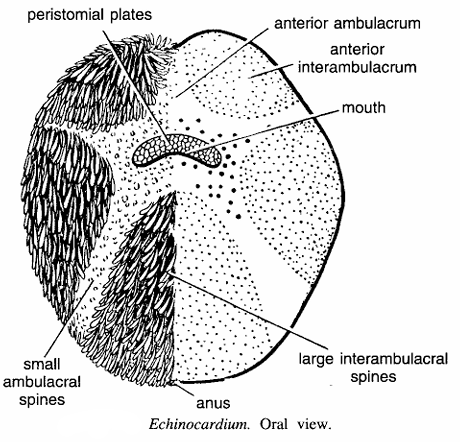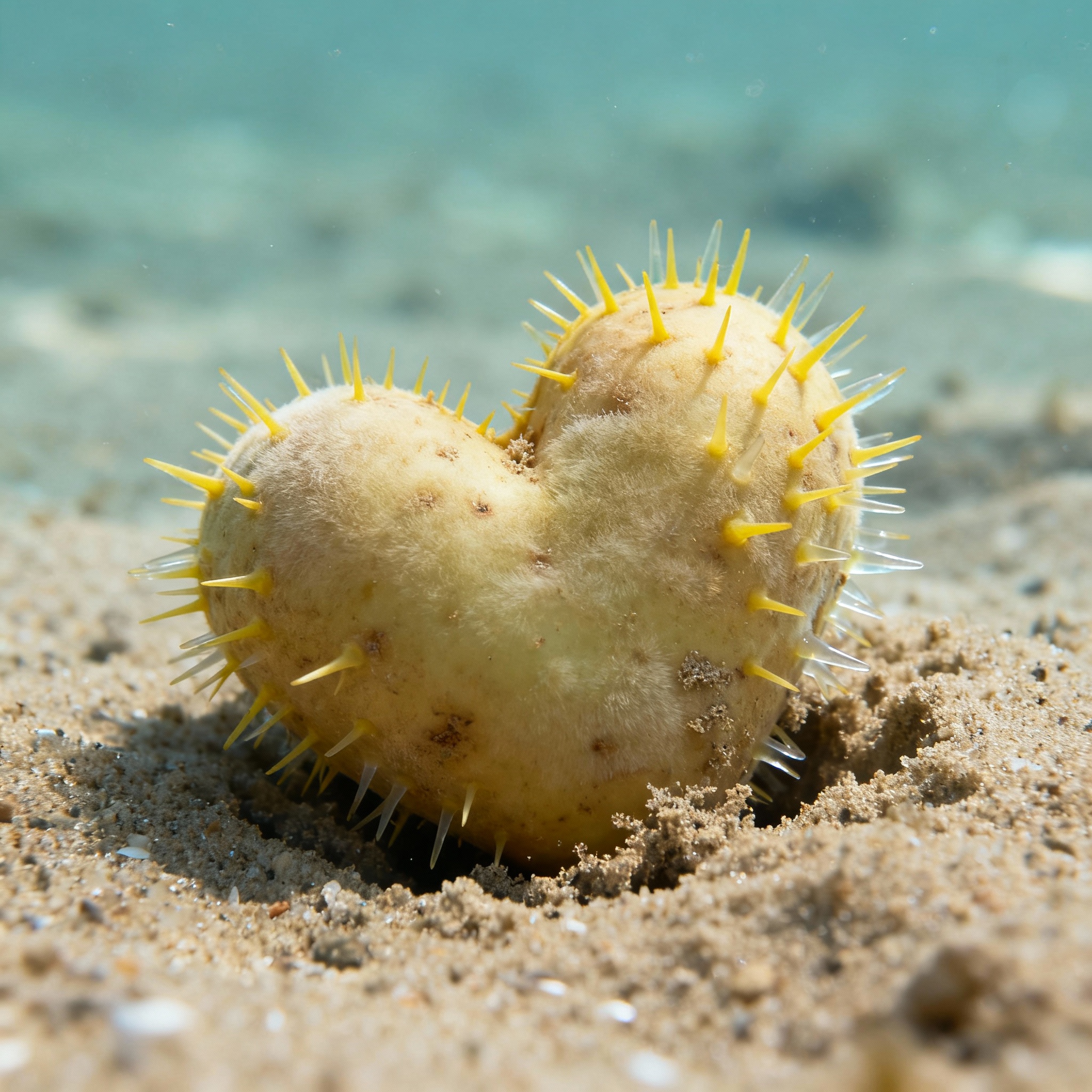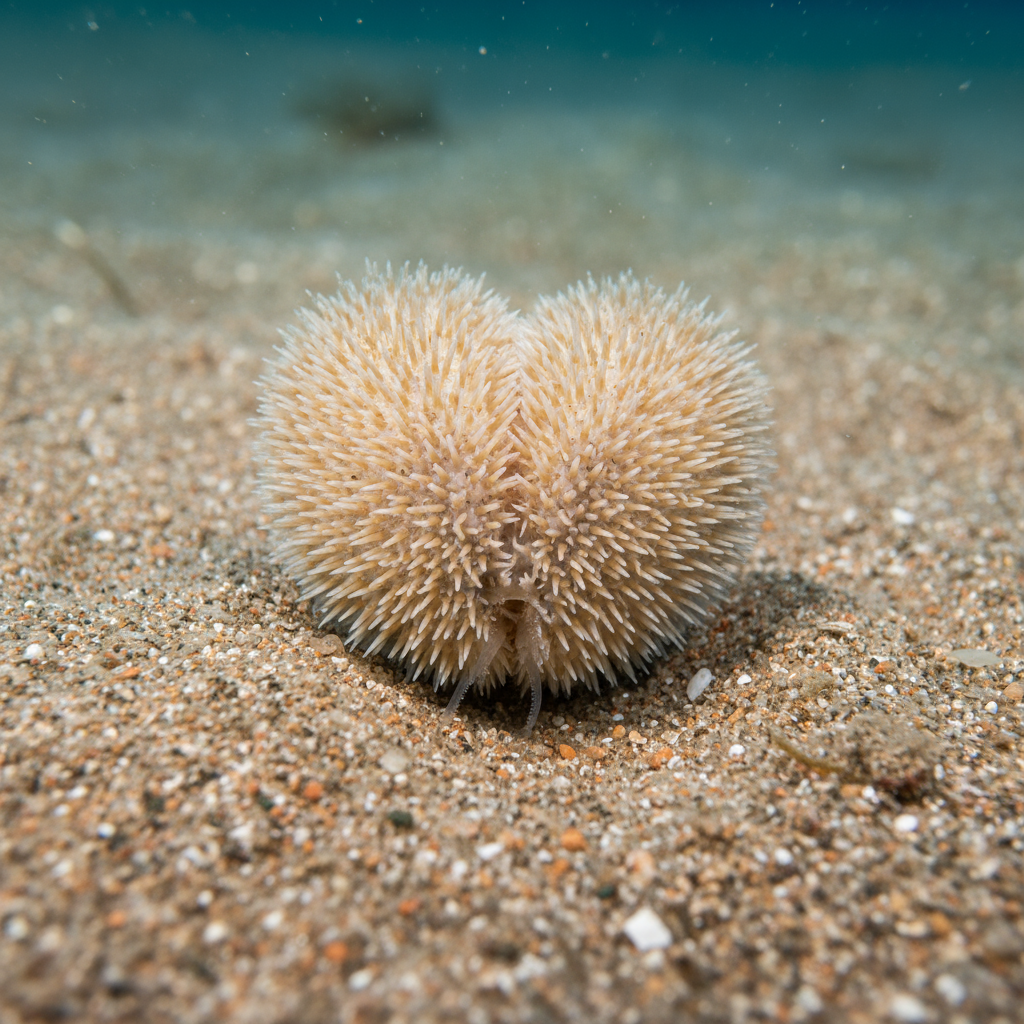Echinocardium: Detailed Overview of the Sea Potato Genus
Echinocardium is a genus of heart urchins belonging to the family Loveniidae within the class Echinoidea of phylum Echinodermata. These marine echinoderms are distinguished by their heart-shaped, somewhat inflated tests and a dense covering of short spines. Commonly referred to as “sea potatoes,” species within this genus are widespread in temperate and cold seas and play essential roles as burrowers and sediment recyclers in benthic habitats.
Classification of Echinocardium
| Taxonomic Rank | Name | Characteristic |
|---|---|---|
| Kingdom | Animalia | Multicellular, heterotrophic marine animals |
| Phylum | Echinodermata | Marine animals with radial symmetry and calcareous skeleton |
| Class | Echinoidea | Sea urchins, heart urchins, and sand dollars with spiny tests |
| Order | Spatangoida | Heart-shaped and bilateral asymmetric sea urchins |
| Family | Loveniidae | Heart urchins with soft spines adapted for infaunal life |
| Genus | Echinocardium | Rounded, heart-shaped urchins covered in fine short spines |

Habitat and Habit
Echinocardium species inhabit sandy or muddy substrates in shallow coastal waters and continental shelf regions from intertidal zones to depths up to approximately 200 meters. They live burrowed beneath the sediment surface, using their fine spines and strong body movements to dig and maintain burrows.
As sub-surface deposit feeders, they consume organic material, detritus, and microorganisms within the sediment, contributing to benthic nutrient cycling and sediment aeration.
Echinocardium burrows in sand 10 to 15 cm deep and moves by spines. It lives in a small chamber, which opens to surface by a chimney, through which animal feeds by protruding tube feet.
Geographical Distribution
Echinocardium species, including Echinocardium cordatum (the common sea potato), are cosmopolitan in temperate and sub-Arctic waters. They are abundant along the coasts of the British Isles, northern Europe, parts of North America, Australasia, and Japan. Their distribution corresponds to sandy habitats with low mud content and relatively sheltered coastal environments.

General Characteristics
- It shows extreme modification of echinoderm pattern as it becomes heart-shaped and is popularly known as heart urchin.
- Test is large in size with four well-developed petaloids and aboral surface and anterior and posterior sides.
- On oral surface long tubercles interambulacral spines are present.
- Apical central plate contains gonopores. or long Peristome or mouth becomes transversely extended
- Aristotle’s lantern is absent.
- Ambulacral areas bear short tube feet and short spines called ambulacral spines. Inter-ambulacral areas bear long spines.
- Development includes echinopluteus larva.
- Test: Heart-shaped, rigid calcareous skeleton covered in a dense felt of fine yellow-brown spines that lie flat and point posteriorly.
- Size: Typically around 6 to 9 cm in length.
- Spines: Short, soft, and densely packed, aiding in burrowing and protection.
- Body Shape: Bilaterally symmetrical with a distinct anterior-posterior orientation; highest point situated posterior to the apical system.
- Ambulacral Areas: Broad, furrow-like areas running along the test sides, contributing to the star-shaped final pattern visible on the surface.
- Tube Feet: Arranged in double rows within the ambulacral grooves, used for respiration, movement, and interaction with sediment.
Special Features
- The species has adapted to an infaunal lifestyle, burrowing to depths of 8 to 15 cm within sandy sediments.
- Echinocardium shows rapid growth during spring and summer months, with seasonal growth variation reported.
- They host various commensal organisms, including certain bivalves and amphipods, which live in their burrows or attach to their spines.
- They play a vital role in bioturbation, influencing sediment structure and chemistry.

Behavior and Ecology
Echinocardium cordatum is a non-selective deposit feeder, ingesting sediment and extracting organic content. This feeding strategy plays a critical role in sediment nutrient cycling and enhances benthic ecosystem functioning. Their burrowing helps maintain substrate aeration and prevents sediment compaction.
Reproduction involves seasonal spawning; fertilized eggs develop into planktonic larvae before settling into the benthos and metamorphosing into juveniles. Populations may exhibit aggregations during breeding seasons.
References
- https://en.wikipedia.org/wiki/Sea_cucumber
- http://www.marinespecies.org/echinoidea../aphia.php?p=taxdetails&id=124392
- https://www.marlin.ac.uk/species/detail/1417
- https://www.inaturalist.org/taxa/Echinocardium%20cordatum
- https://en.wikipedia.org/wiki/Echinocardium_flavescens
- https://www.marinebio.org/creatures/marine-invertebrates/echinoderms/
- http://www.marinespecies.org/aphia.php?p=taxdetails&id=124392
- https://www.nwf.org/Educational-Resources/Wildlife-Guide/Invertebrates/Sea-Cucumbers
- https://animaldiversity.org/accounts/Echinocardium/classification/
- https://www.britannica.com/animal/sea-cucumber

